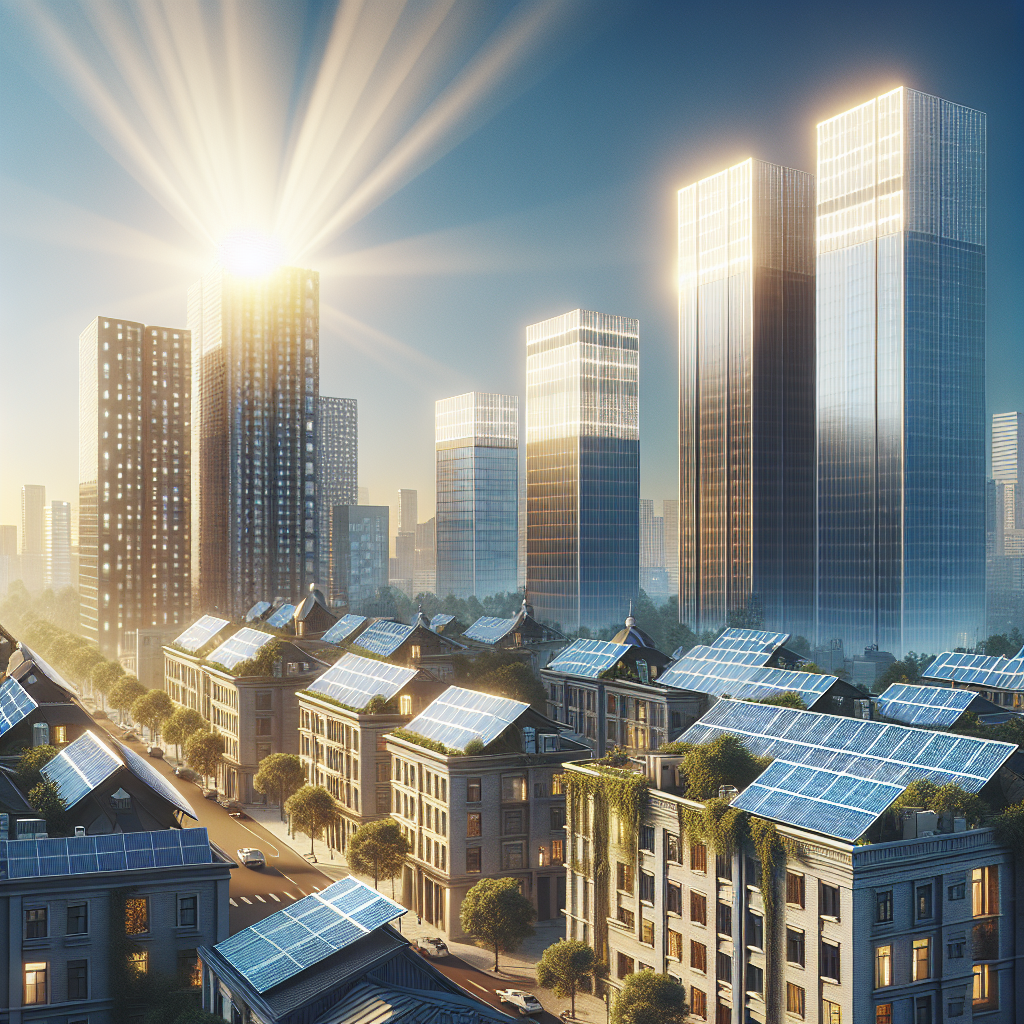Solar Integration in Construction: Powering Buildings Naturally
Introduction
The integration of solar technology in construction has emerged as a transformative approach to building design and energy management. As the demand for sustainable and energy-efficient buildings grows, architects, builders, and developers are increasingly turning to solar power to meet these needs. Solar integration in construction not only reduces carbon footprints but also enhances the aesthetic and functional value of buildings. This article explores the various dimensions of solar integration in construction, its benefits, challenges, and future prospects.
The Evolution of Solar Integration in Construction
Historically, solar technology in construction was limited to simple solar panels installed on rooftops. However, advancements in technology and growing environmental awareness have spurred more innovative applications. Today, solar integration encompasses a wide range of solutions, from building-integrated photovoltaics (BIPV) to solar thermal systems, which are seamlessly incorporated into the building’s architecture.
Building-Integrated Photovoltaics (BIPV)
BIPV systems are a game-changer in the realm of sustainable construction. Unlike traditional solar panels that are mounted on rooftops, BIPV systems are integrated into the building’s envelope, including facades, roofs, and windows. This integration allows for a more aesthetically pleasing design while providing the building with renewable energy.
Benefits of BIPV:
1. Aesthetic Appeal: BIPV systems are designed to blend with the building’s architecture, offering a sleek and modern look.
2. Energy Efficiency: By generating electricity on-site, BIPV reduces reliance on grid power and lowers energy bills.
3. Sustainability: BIPV systems contribute to reducing greenhouse gas emissions and promoting the use of renewable energy.
4. Space Optimization: Since BIPV systems are part of the building structure, they do not require additional space like traditional solar panels.
Solar Thermal Systems
Solar thermal systems harness the sun’s energy to provide heating and cooling solutions for buildings. These systems consist of solar collectors, which absorb solar radiation and convert it into thermal energy. This energy can be used for space heating, water heating, and even cooling through solar absorption chillers.
Advantages of Solar Thermal Systems:
1. Cost Savings: Solar thermal systems can significantly reduce heating and cooling costs, leading to long-term savings.
2. Environmental Benefits: By relying on solar energy, these systems help reduce carbon emissions and dependence on fossil fuels.
3. Versatility: Solar thermal systems can be used for various applications, including residential, commercial, and industrial buildings.
Incorporating Solar Design Principles
Effective solar integration in construction goes beyond the installation of solar panels and systems. It involves incorporating solar design principles during the planning and design phases. These principles include:
1. Passive Solar Design: This approach maximizes the use of natural sunlight for heating, cooling, and lighting. It involves strategic placement of windows, insulation, and thermal mass to optimize energy efficiency.
2. Orientation and Placement: The orientation of the building and the placement of solar panels are critical for maximizing solar exposure and energy generation.
3. Shading and Glazing: Proper shading devices and glazing materials help control the amount of solar heat entering the building, enhancing comfort and reducing energy consumption.
Challenges and Solutions
Despite the numerous benefits, solar integration in construction faces several challenges:
1. Initial Costs: The upfront cost of solar technology can be high, posing a barrier for some developers and homeowners. However, government incentives, tax credits, and falling prices of solar panels are making solar integration more affordable.
2. Technical Expertise: The installation and maintenance of solar systems require specialized knowledge and skills. Training programs and certifications for builders and contractors can help address this issue.
3. Aesthetic Concerns: Some stakeholders may be concerned about the visual impact of solar panels. Modern BIPV solutions and innovative designs can mitigate these concerns.
Future Prospects
The future of solar integration in construction looks promising, with ongoing research and development driving innovation. Emerging technologies such as transparent solar cells, solar paint, and advanced energy storage systems hold the potential to revolutionize the way buildings harness and utilize solar energy. Additionally, smart building technologies and IoT integration will enable more efficient energy management and optimization.
FAQs
1. What is solar integration in construction?
Solar integration in construction involves incorporating solar technology, such as photovoltaic panels and solar thermal systems, into building design and architecture to generate renewable energy and improve energy efficiency.
2. What are the benefits of using BIPV systems?
BIPV systems offer aesthetic appeal, energy efficiency, sustainability, and space optimization by integrating solar panels into the building structure.
3. How do solar thermal systems work?
Solar thermal systems use solar collectors to absorb solar radiation and convert it into thermal energy for heating and cooling applications.
4. What are passive solar design principles?
Passive solar design principles aim to maximize the use of natural sunlight for heating, cooling, and lighting by strategically placing windows, insulation, and thermal mass in the building.
5. What challenges does solar integration in construction face?
Challenges include initial costs, the need for technical expertise, and aesthetic concerns. Solutions include government incentives, training programs, and innovative design approaches.
6. What is the future of solar integration in construction?
The future looks promising with advancements in transparent solar cells, solar paint, energy storage systems, and smart building technologies, all contributing to more efficient and sustainable energy use in buildings.
Conclusion
Solar integration in construction represents a critical step towards a sustainable and energy-efficient future. By harnessing the power of the sun, buildings can reduce their environmental impact, lower energy costs, and enhance their aesthetic appeal. As technology continues to evolve, the potential for innovative and effective solar solutions in construction will only grow, paving the way for a greener and more sustainable built environment.

